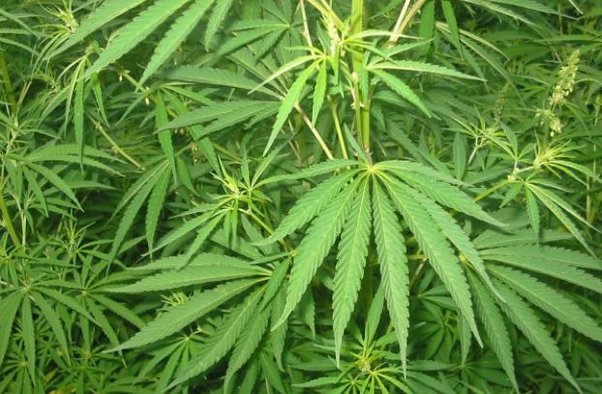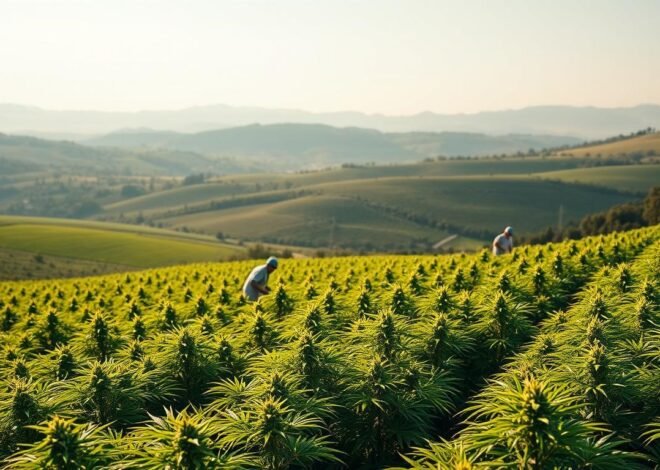
Bhang in India: it is legal or not?
Isn’t it peculiar that a country imposing hefty taxes of 28% on tobacco products and 18% on alcohol openly permits the sale of a drug through government-licensed shops? How did this drug manage to evade prohibitions even during the strict bans enforced in the British regime? And why is it that even religions do not entirely oppose its use?
For centuries, India has had a deep-rooted connection with cannabis, particularly its derivative known as Bhang. Indigenous to India, Bhang has been an integral part of our culture for generations. It continues to be consumed as a beverage during festivals, especially during Holi and Shivratri. Its usage in the country is not a recent development; rather, it traces back to around 400 BCE, as documented in the Vedic scriptures. Presently, according to the ‘Magnitude of Substance Use in India, 2019’ report released by the Ministry of Social Justice and Empowerment, a higher percentage of Indians consume Bhang (2%) compared to Charas or Ganja (1.2%). States like Punjab, Sikkim, Uttar Pradesh, Chhattisgarh, and Delhi exhibit a higher prevalence of Bhang compared to others. However, before delving into such specifics and statistics, it’s essential to understand the meaning of ‘Bhang’.
Understanding Bhang: Composition and Origins
To comprehend Bhang, one must refer to the NDPS policy, which governs its usage, defining it as an edible concoction crafted from the leaves of the readily available herb known as Cannabis sativa. Due to its herbal origins, Cannabis possesses potent constituents such as Cannabinoids, Terpenes, and Flavonoids. Among over 100 recorded Cannabinoids in Cannabis plants, THC and CBD stand out as the most prominent. When a cultivar’s THC content exceeds 0.3%, it acquires psychoactive properties, essentially capable of inducing a ‘high’ post-consumption. It is from such cultivars that charas, Bhang, Hashish, and ganja are derived. While Charas and Ganja originate from different parts of the plant, Bhang and Hashish are preparations made from its extracts. Technically, Bhang is exclusively derived from the leaves of the cannabis plant. It is produced from both male and female leaves, occasionally incorporating the flowering part of the male plant, primarily through the grinding of leaves and stems to yield a ground mixture. Hence, Bhang is not another cultivar, species, or name but rather a preparation derived from a cultivar variety of the Cannabis plant possessing relatively higher THC content, capable of inducing a ‘high’.
Historical Significance of Bhang in the Context of India
India’s association with cannabis dates back around 2000 years. Gradually, cultivation proliferated across the subcontinent, spanning from Kashmir to Kullu (Himachal Pradesh), Gujarat, southern Maratha country agency, central India, Assam, Bengal, Orissa, and the Madras presidency. Among these regions, the finest variety, known as baluchar, hailed from the Ganja mahals of Bengal. While home cultivation was common, it often occurred clandestinely. With such widespread cultivation, cannabis became intertwined with social rituals, religious ceremonies, and everyday life in India. A tangible manifestation of this relationship was the emergence of Bhang, a milder, edible preparation derived from cannabis, savored during festivals, social gatherings, or offered to guests. It also gained popularity as a refreshing solution during the sweltering summer months, often enjoyed in concoctions like thandai and lassi. Common people in regions like Punjab and Berar also embraced Bhang fakirs, a mixture of gur and bhang, as a quick energy boost during their busy daily routines.
Religious Perspectives on Bhang
Sikhism
In Sikhism, Shri Guru Nanak advocated abstaining from intoxicants, including Bhang. Subsequently, the Sri Guru Nanak Prabhandhak Committee imposed a ban on Bhang. Despite this, a sect within Sikhism, the Nihangs, continues to disregard the ban and partakes in the consumption of Bhang, referred to as ‘Sukha’, ‘sukhnidhaan’, or Shaheedi Digha.
Hinduism
Bhang holds a special significance in Hinduism, particularly in association with Lord Shiva, who is believed to favor it as his preferred food. It is still consumed on the occasions of Holi and Shivratri, both deeply connected to Lord Shiva. Throughout history, Bhang has been utilized in religious and spiritual practices, employed by Sadhus to induce meditative states and in the ritual worship of Lord Shiva.
Islam
While cannabis was adopted in the Moslem Middle East centuries after the prophet’s death, there is no mention of its prohibition in the Koran. The Koran prohibits the use of fermented beverages but does not address cannabis. In the post-9th century Islamic world, many writers and poets praised the properties of Bhang. Some tales even mention its use in religious rites, such as casting away evil from the faithful in mosques.
Buddhism
Different schools of Buddhism have varying attitudes towards intoxicants. While Theravada Buddhism forbids their use, Mahayana Buddhism discourages it to some extent, and Vajrayana, associated with Tantric systems, minimally discourages it and sometimes encourages it. There are interpretations within Buddhism advocating for the medical use of Bhang, aligning with ethical principles that promote benefitting oneself and others while avoiding harm.
Legal Position of Bhang in India
India is a signatory to international conventions regulating narcotics and psychotropic substances. The Narcotic Drugs and Psychotropic Substances Act of 1985 prohibits the consumption of certain substances like Charas and Ganja but excludes Bhang due to its preparation from cannabis leaves, rather than flowering tops or resins. The National Policy on Narcotic Drugs And Psychotropic Substances oversees the cultivation and use of Bhang, permitting its production strictly from wild cannabis leaves for non-commercial purposes. States have the autonomy to regulate cannabis within their territories, primarily for scientific and medicinal use.
Reasons Behind Exclusion of Leaves in NDPS Act
The legislature opted to exclude seeds and leaves of the cannabis plant from the NDPS Act due to their minimal THC content. Bhang, made from these leaves, is considered the least potent of all cannabis preparations in India. This decision traces back to colonial times when detailed studies on the effects of cannabis were conducted by British authorities. The Indian Hemp Drugs Commission Report concluded that banning Bhang would be unjustified, considering its religious and cultural significance in India. Additionally, it was deemed less harmful than alcohol or tobacco, warranting its exemption from prohibition.
Methods of Consumption
Bhang is typically consumed in various forms, often blended with nuts, herbs, and spices to create beverages like thandai or lassi. It can also be ingested as Bhang golis, a mixture of ground bhang and water, or incorporated into sweets and snacks like Bhang Besan Halwa and Bhang masala Tea. In Himalayan regions, it is used in chutneys. Bhang is valued for its recreational effects due to its THC content and is also consumed for its purported anti-inflammatory and anti-phlegmatic properties.
Medicinal Uses of Bhang
Ayurveda
Throughout history, Bhang’s medicinal properties have been recognized, with references dating back to the Vedic Age. Ayurveda considers Bhang a Upavisha, a sub-toxic herb, recommended for use after purification processes. It is mentioned in ancient texts like the Atharva Veda and Sushruta Samhita for its therapeutic benefits in treating various ailments, including nervous disorders, eye conditions, malaria, skin infections, and insomnia. Ayurvedic preparations of Bhang are claimed to address digestive issues, muscular pains, inflammation, and more.
Unani System
In the Unani system of medicine, Bhang is esteemed for its aphrodisiac, retentive, hypnotic, and sedative properties.
Homoeopathy
While homeopathy primarily uses the flowering part of the cannabis plant, it acknowledges the therapeutic potential of cannabis for treating personality disorders, mental ailments, memory loss, and physical pain.
Allopathy
While research on the medicinal benefits of Bhang in allopathic medicine is limited, studies on THC, its active compound, have shown promising results. THC has been found effective in alleviating nausea and vomiting in chemotherapy patients. Ongoing trials explore its potential in treating epilepsy, glaucoma, cancer, HIV-AIDS, sclerosis, pain management, anxiety, and stress.
Recreational Use of Bhang
Bhang can be consumed safely in small doses under guidance, often for its relaxing effects. However, some individuals use it recreationally to experience a “high.” It’s crucial to pay attention to dosage and concentration to avoid complications associated with excessive intake. While Bhang has therapeutic properties, recreational use should be approached with caution to harness its marvelous and healing powers effectively.
Benefits of Bhang
Bhang leaves offer various benefits, including:
- Acting as an Antidepressant
- Serving as a Natural Painkiller
- Aiding in Weight Loss
- Combatting Skin Problems
- Preventing Growth of Cancer Cells
- Treating Nausea and Vomiting
- Providing a Cooling Effect
- Used in Treating Mental Disorders
- Effective in Seizures and Epilepsy
- Possessing Anti-Bacterial and Anti-Phlegmatic Properties
- Acting as an Analgesic
Side Effects of Bhang
While Bhang offers numerous benefits, excessive consumption can lead to various side effects, including:
- Confusion
- Dry Mouth
- Fatigue
- Anxiety
- Changes in Mood
- Increased Heart Rate
- Dizziness
- Headaches
- In rare cases, it can lead to hallucinations, paranoia, panic attacks, nausea, and vomiting.
Places to Explore Bhang Beverages and Delicacies
If you’re interested in exploring Bhang, consider visiting these establishments:
- Off Limits Coffee in Kasol, offering Bhang coffee
- The Hemp Cafe in Pune, serving their specialty “Bhang ka sandwich”
- Hemp Station in Calicut, known for its hemp seed milkshake
- Doctor Bhang in Jaisalmer
- Special Lassi shops in Pushkar and Varanasi
- Gopa Chowk in Jaisalmer
- Blue Lassi Shop in Varanasi
- Sarkari Theka Bhang in Mathura
- Theka Bhang Assi Ghat in Varanasi
- Hippie Island in Hampi
- Hatibagan in Kolkata
Conclusion
Bhang, deeply ingrained in India’s cultural and religious fabric, continues to spark curiosity and questions regarding its legality, usage, and effects. Despite regulatory frameworks and varying religious perspectives, Bhang remains a part of festivals, rituals, and medicinal practices across the country. Its historical significance, coupled with its potential therapeutic benefits, underscores the need for nuanced discussions and regulations surrounding its consumption. As individuals explore Bhang’s recreational and medicinal aspects, it’s essential to approach its use with caution, emphasizing responsible consumption and awareness of its effects.
FAQs
Why does India permit the sale of Bhang despite imposing heavy taxes on tobacco and alcohol?
It might seem peculiar that a country imposing high taxes on tobacco and alcohol allows the sale of Bhang through government-licensed shops. The historical and cultural significance of Bhang in India, coupled with its medicinal and religious associations, has contributed to its acceptance despite stringent regulations on other substances.
How did Bhang manage to evade prohibitions during the British regime?
Despite strict bans enforced during the British colonial era, Bhang continued to be used in India due to its deeply rooted religious and cultural significance. Studies conducted by British authorities recognized the unjustifiability of banning Bhang, considering its comparatively lower harm potential and widespread traditional use.
Why do religions not entirely oppose the use of Bhang?
Various religions in India, including Hinduism and Sikhism, have complex relationships with Bhang. While some sects within these religions advocate abstaining from intoxicants, others embrace Bhang as part of religious rituals and cultural traditions. Additionally, historical and textual references highlight the medicinal and spiritual significance of Bhang in religious practices.
What is the composition and origin of Bhang?
Bhang is an edible preparation crafted from the leaves of the Cannabis sativa plant. It contains potent constituents such as Cannabinoids, Terpenes, and Flavonoids, with THC and CBD being prominent Cannabinoids. Originating from cultivars with higher THC content, Bhang is derived from grinding the leaves and stems of the cannabis plant, making it distinct from other preparations like charas and ganja.
What are the medicinal uses and side effects of Bhang?
Bhang has been recognized for its therapeutic properties in Ayurveda, Unani medicine, and even modern allopathic medicine. It offers benefits such as pain relief, anti-inflammatory effects, anti-nausea properties, and potential anticancer activity. However, excessive consumption can lead to side effects such as confusion, dry mouth, fatigue, anxiety, and in rare cases, hallucinations and paranoia.


